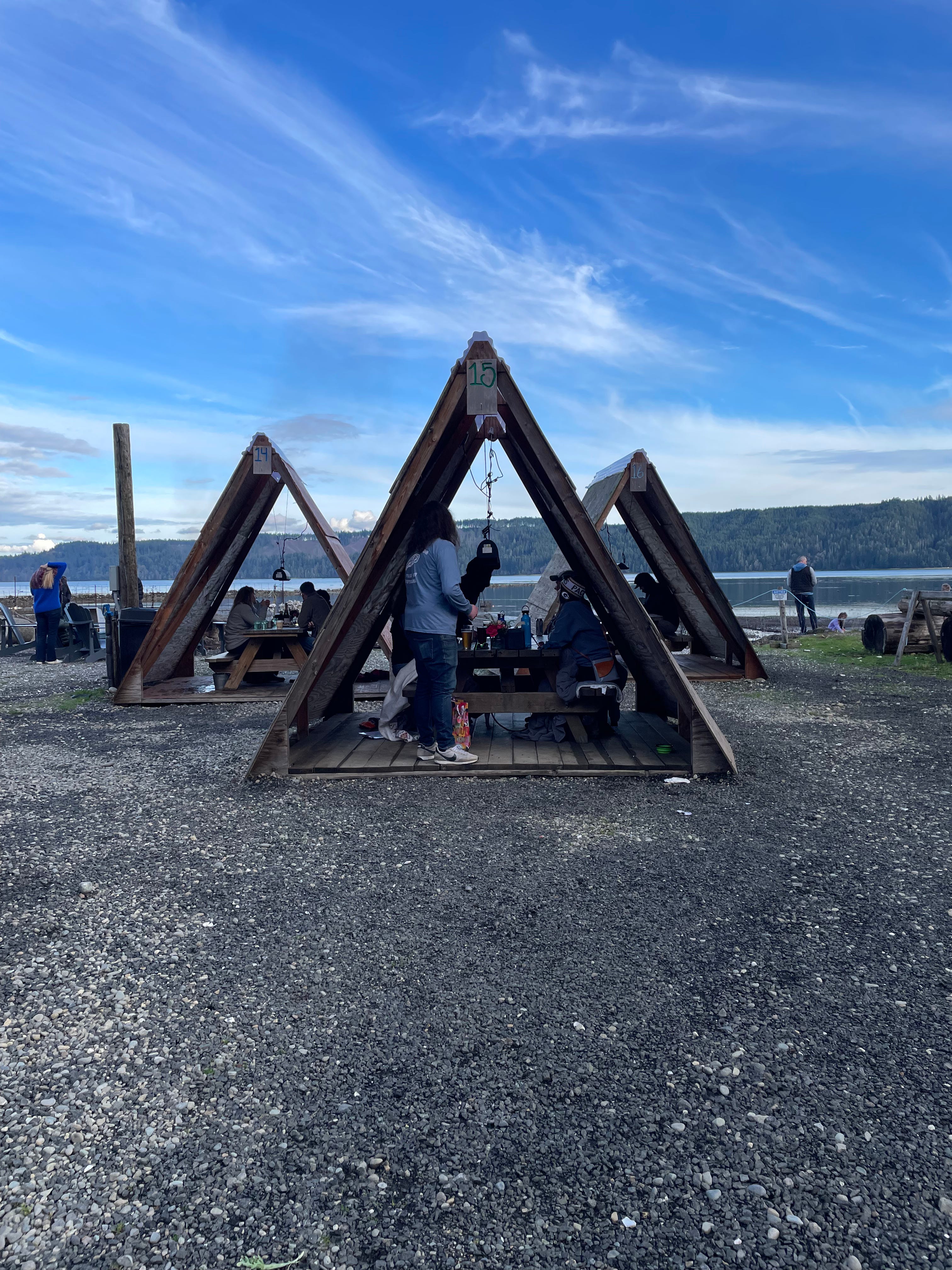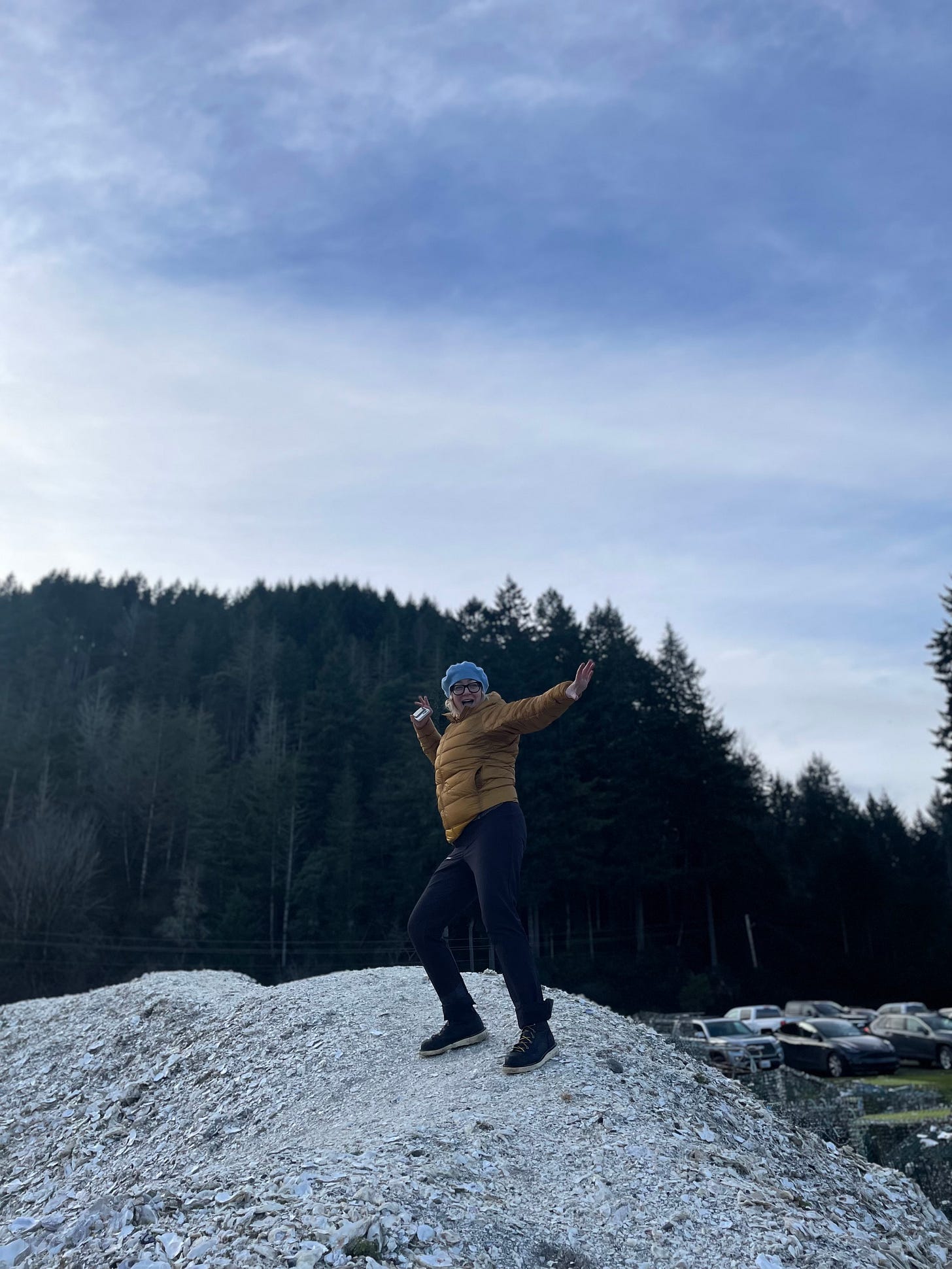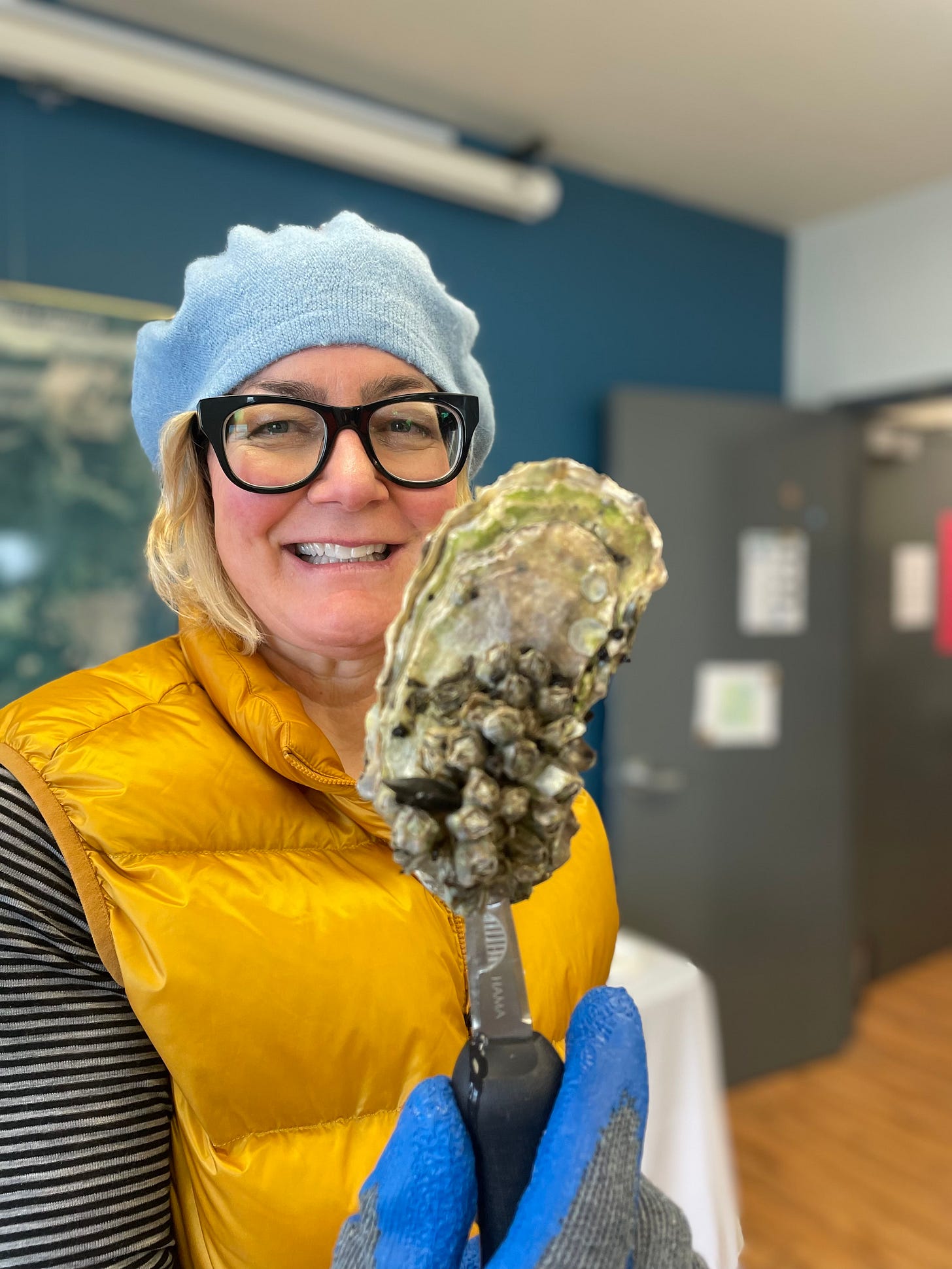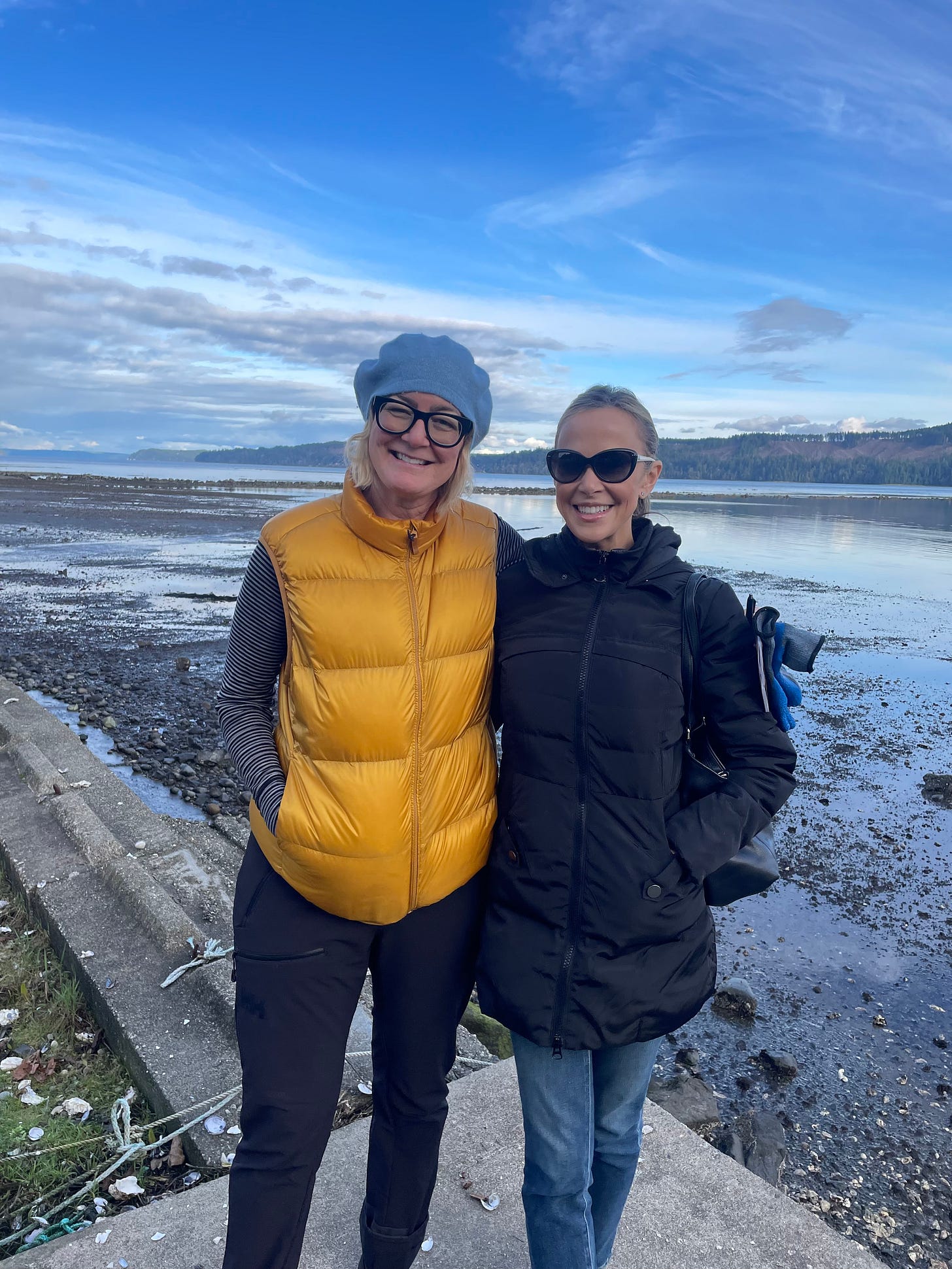1851 - 1907. After Seattle was founded, but before Pike Place Market.
I’m trying to remember the very first time I ate an oyster, but I can’t.
I’ve loved seafood since I was a kid, my first loves being shrimp and lobster. Transported over hundreds of miles inland since you can’t get that stuff fresh in Colorado. I ate sushi for the first time in Seattle in my early 30s, and I think the Emerald City was where I ate my first oyster, too.
The tidal flats of Washington state are numerous. But not as numerous as they used to be. For a Seattleite to gather fresh oysters straight from the source now, one must get in a car and drive a couple of hours. Which is what I did in early February. We did. Me and my friend, Laura. Who, incidentally, is the one who introduced me to oysters. She’s a very adventurous eater whose culinary spirit has rubbed off on me (I’ve eaten escargot at her prodding, too). We drove south on I-5 past Mt. Rainier, the car dealerships and strip malls outside Tacoma, continuing through Olympia, then turning north onto the Olympic Peninsula via Highway 101. The conifer-crowned Hood Canal, blue and gray, green and brown, blurred on our starboard side until we got to the farm, its crops ripening not in fields of dirt, but in expanses of cold, choppy water.
I’ve known of Hama Hama for a long time, learning about the famed oyster farm from Renee Erickson’s Instagram posts. She serves their oysters in more than one of her restaurants, her most renowned oyster joint being The Walrus and the Carpenter. Laura and I signed up for a class together. Oysters 101. We arrived at Hama Hama, parked near a midden1 on which we stood later, looking out over the A-frame covered picnic tables that dotted the shore. The class was in a room on the second floor of an unassuming building of timber and drywall, humble and utilitarian, with a projector screen in the front and maps in the back, plotting all the nearby places that grow these delicious bivalves. There were about 20 people around the table and together we learned about the five types of oysters in the United States2:
Pacific
Atlantic or Eastern
Kumamoto
Olympia
European Flats
We learned about oyster biology – muscles, gills, hinge! – and about the various ways oysters grow. We learned about merrior, terroir’s seaward cousin. We learned how to insert a knife in just the right spot to open the salty delicacy. Where to cut the muscle to ensure a seamless slip of the oyster out of its shell so it slides readily down the throat. We learned about mignonettes and rum butter and how these things are like spice for oysters, enhancing their flavor. Or actually, more like changing it. The taste of a fresh oyster, straight from the sea, doesn’t need enhancing.
So much of this was new to me, but humans eating oysters is not.3 Humans have been eating oysters for millennia.
“So there we were, 100,000 BC (give or take a few millennia) with our backs to the wall, facing extinction. A growing desert, expanding south pushed a new species to the brink. As few as 600 Homo Sapiens were left alive. But this tiny, surviving population was forced into their own salvation when they found themselves on the southernmost tip of Africa. For the first time, humans took up residence beside the sea. And now, for the first time, there were oysters to eat.” (Footnote 1)
The Coast Salish people ate oysters, of course. Swallowed them, chewed them, maybe smoked and grilled them, probably boiled them in their bentwood boxes. They were abundant and accessible. This was the oyster on our regional food scene before colonization.4
Later, early legislators in Washington set the groundwork for the state’s prominence in the oyster industry today,5 ensuring first that non-residents of the early territory were prohibited from harvesting oysters and then later with passage of the Bush and Callow Acts:
“The Bush Act allowed a person to purchase up to 100 acres of tideland, provided the buyer was willing to commit these tidelands to growing oysters, clearly stating a goal to "encourage and facilitate [the oyster] industry." The Callow Act, limiting acreage to no more than 40, was directed at those already cultivating oysters on tidelands they intended to purchase, with clear intent that the practice of growing oysters continue on that land.”6
All of this is fascinating to me. And interesting, and sad, and maddening, and infuriating. But it is also inspiring and hopeful.7 To witness the passion and care of the oyster farmers at Hama Hama, let alone the similar sentiments of the other oyster farmers in the region, gives me hope. And to know that people are starting to attribute value and, more importantly, deference to the knowledge and expertise of indigenous peoples, their emotional intelligence involving the natural world, is an encouraging thing. Encouragement that is hopefully not too late.
Next Up
I’m going to spend a little more time on this oyster thing (two posts, max), then transition to the founding of Pike Place Market.
Food is about dialogue. Most people have strong opinions about oysters: they either love them or would rather die than eat one. What’s your stance?
Oysters at Seattle’s Smith Cove Park a test in helping Puget Sound
RELATED
Washington State Shellfish Safety Map
Seattle Trademark History Tour, Part 7: Ostrea Lurida & the San Francisco Oyster House
The Decades Long Comeback of Mark Twain’s Favorite Food
Mark Twain: A model for local-eating moderns?
Humanity’s Primal Connection to Oysters












I wonder how people long ago opened the oyster shell?